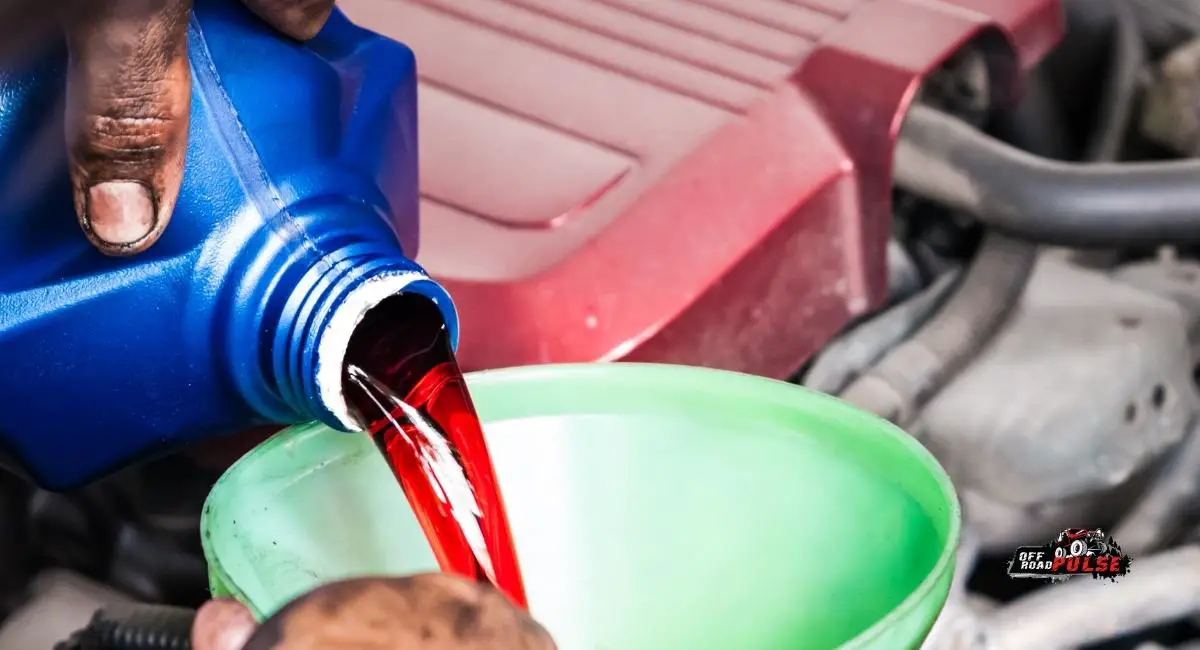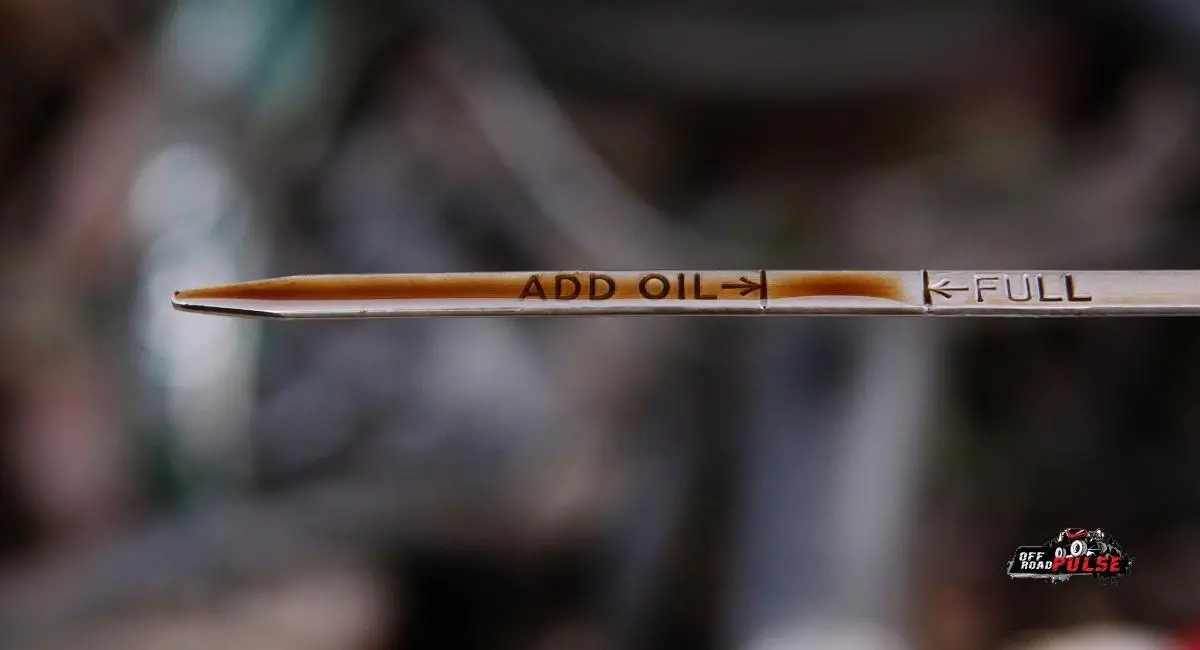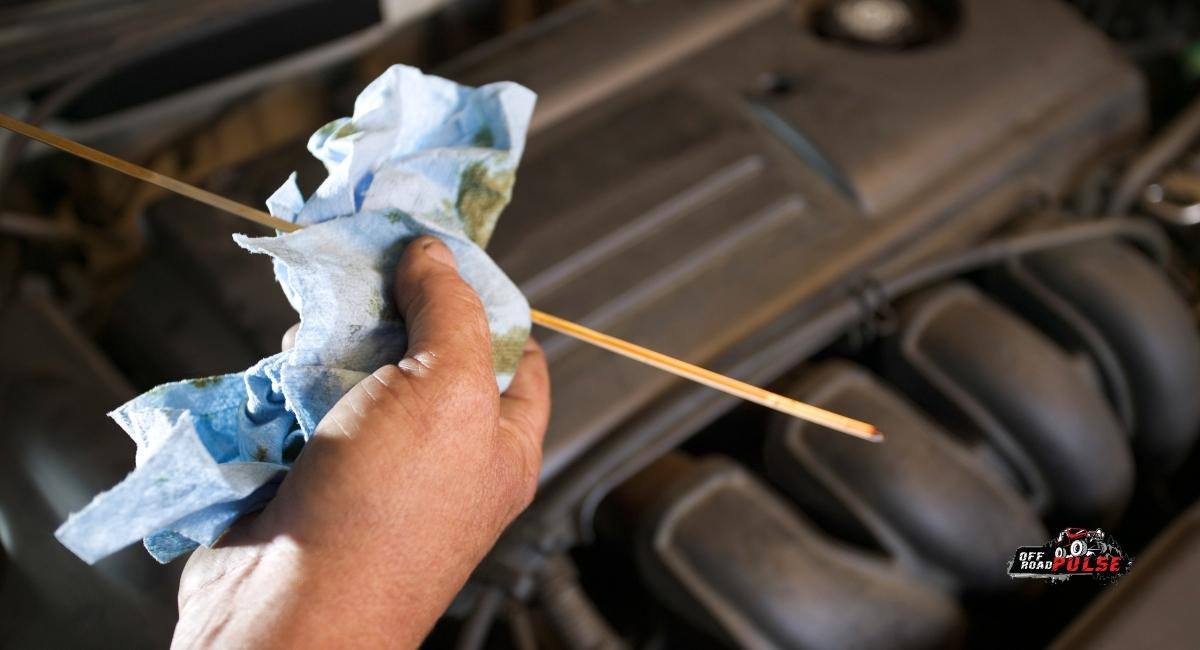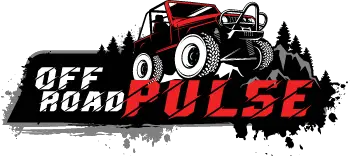Transmission fluid is the lubricating fluid used in the transmission of a car to ensure smooth and efficient conduction of power from one part of the car to another. It also helps keep your car working efficiently and smoothly to get better fuel economy. This fluid is also used to prevent damage to the transmission’s internal components. So, are you wondering how to check transmission fluid in Jeep Wrangler? Read on.
The primary purpose of regularly checking the transmission fluid is to ensure that it is not contaminated by dirt or other substances. Such contamination can cause damage to internal parts if they are not cleaned properly. Additionally, you may want to check the fluid level to ensure it is sufficient for your transmission system. The rule is to change your transmission fluid every 30,000 miles or every two years, whichever comes first.
If you do not regularly check and refill your transmission fluid, you will incur expensive repairs, which could also jeopardize your car.
If you wish to check your Jeep’s transmission level and don’t know how to go about it, this article will get you started.

When to Check Transmission Fluid
Checking transmission fluid should be a part of your car care schedule. The fluid maintains the proper level of lubrication in the transmission by keeping the gears in good working condition.
Other times you’ll need to check the transmission fluid include;
- Checking it when you first get your vehicle and after any significant repair is important.
- Checking the transmission fluid level every month or so is a good idea because it will help to avoid expensive repairs that may be prevented by checking the level before any problems arise.
- It is recommended to check and change your transmission fluid every 30,000 to 60,000 miles for manual transmissions and 60,000 to 100,000 for automatic transmissions. This is a good interval to ensure you maintain the level and get clean fluid in your car.
It is essential to check the fluid level regularly or whenever you notice some indications that it requires a top-up. These are the signs that indicate you should check it even though the above parameters are not reached:
- The transmission starts shifting hard when cold but smooths out as soon as the engine warms up.
- The car pulls to one side while driving at highway speeds.
- You have trouble getting into gear, especially on hills.
- If you notice any unusual noises coming from your vehicle transmission when driving.
- If you notice any drips coming from under the hood, it is time for a new transmission fluid flush and filter change.
Importance of Checking Transmission Fluid
Checking transmission fluid level is an integral part of maintaining your vehicle. Fluid levels should be checked regularly and topped off if necessary. Here are some reasons why checking the level is essential:
- To keep your transmission working properly. If there’s too little fluid in the transmission, it can cause unwanted slippage and reduce fuel economy. Likewise, too much fluid in the transmission can cause problems such as erratic shifting, overheating, and foaming fluid.
- The transmission fluid may be contaminated with dirt, water, and other debris that causes reduced transmission performance and increased wear on the internal components.
- Over time, the transmission fluid can lose its ability to lubricate properly. This causes slippage and loss of power caused by overheating due to contamination (oil cooler failure).
- Leaking seals or gaskets in the transmission can cause damage to the internal components resulting in expensive repairs if not detected early enough before significant damage occurs.
How to Check and Fill Transmission Fluid Jeep Wrangler
Do you wish to check the transmission fluid on your Jeep Wrangler on your own to save the cost of taking it to a mechanic, but don’t know how to go about it? You can follow these steps:
Step 1#:
Unlike when checking for the oil level, you check the transmission fluid after first warming up the vehicle. Turn your vehicle on and let it run for a few minutes until the transmission is heated sufficiently. Put your car into Park or Neutral but ensure the parking brake is on.
Note: Ensure the vehicle is parked on a level ground to get the correct readings.
Step 2#:
To check for transmission fluid, you will need first to find the dipstick. Open the hood of your Jeep and remove the engine cover. Check on the right side or above the oil dipstick to see if you can locate the transmission dipstick. Often, the transmission dipstick is the yellow slanted one. The straight yellow dipstick is for the oil.
If you can’t find it or don’t know where to look, confirm from the Jeep Wrangler user’s manual.
Step 3#:
Once you locate the dipstick, you can proceed and pull it out. Smear the transmission fluid on the dipstick on your first finger and thumb. Look at the color of the oil carefully. It should be clear of particles and debris and be a bit pinkish.
Additionally, smell it to confirm that it doesn’t have a burnt odor. You will need to replace it if it has a burnt odor, particles or is dark in color or murky.
Step 4#:
Wipe the dipstick with a clean, dry rag or paper towel, then put it back in place, ensuring that you do not touch any other parts of the engine. Put it in all the way and pull it out again to check the level. The dipstick has two markings one indicating “full” and the other “low”. The fluid level should reach the full mark. If it is below that mark you should top up.
Step 5#:
You are good to go if the measurement is at the full mark. However, if the reading is below the full mark, you will need to refill. Use a funnel to pour new transmission fluid into your Jeep’s transmission and fill your transmission pan to its original level. Check the fluid level again as you did in step 4 above.
When refilling, ensure you don’t add excess transmission fluid since this can cause problems such as erratic shifting, overheating, and foaming fluid, among others.

Type of Transmission Fluid to Use in Jeep Wranglers
Your Jeep Wrangler uses synthetic-based transmission fluids such as Dexron III or V. These types of transmission fluids work well at temperatures from -50°F to 150°F, which is how your Jeep Wrangler handles winter weather conditions. The main benefits of these types of fluids include the following:
- Increased lubrication ability compared to conventional oils.
- Excellent thermal stability.
- Low viscosity index (VI) for high efficiency at extreme temperature ranges.
- High antioxidant properties to protect against oxidation damage.
- Reduced carbon build-up compared with conventional oils.
Another fluid to use in your Jeep Wrangler is ATE Super Blue. It’s an ATF-based synthetic blend that offers excellent thermal stability and performance capabilities. However, it is always important to check the type of transmission fluid to use on your Jeep Wrangler user’s manual.

Final Word
We believe we have adequately equipped you on how to check transmission fluid in Jeep Wrangler. The manufacturer always recommend that you check the transmission fluid to keep your car running smoothly. The fluid should be between the minimum and maximum marks on the dipstick.
Also Read: The Best Jeep Wrangler Personalized License Plate Ideas
Transmission fluid lubricates a transmission’s internal components to allow smooth shifting between gears. It protects the gears from wear and overheating, making it a crucial part of the vehicle.
It is important to note that the amount and frequency of changing the transmission fluid for your vehicle will depend not just on your specific make and model but also on your driving habits. Such habits include where and how you drive and whether you regularly haul heavy loads or drive off-road. We wish you all the best in your check.




